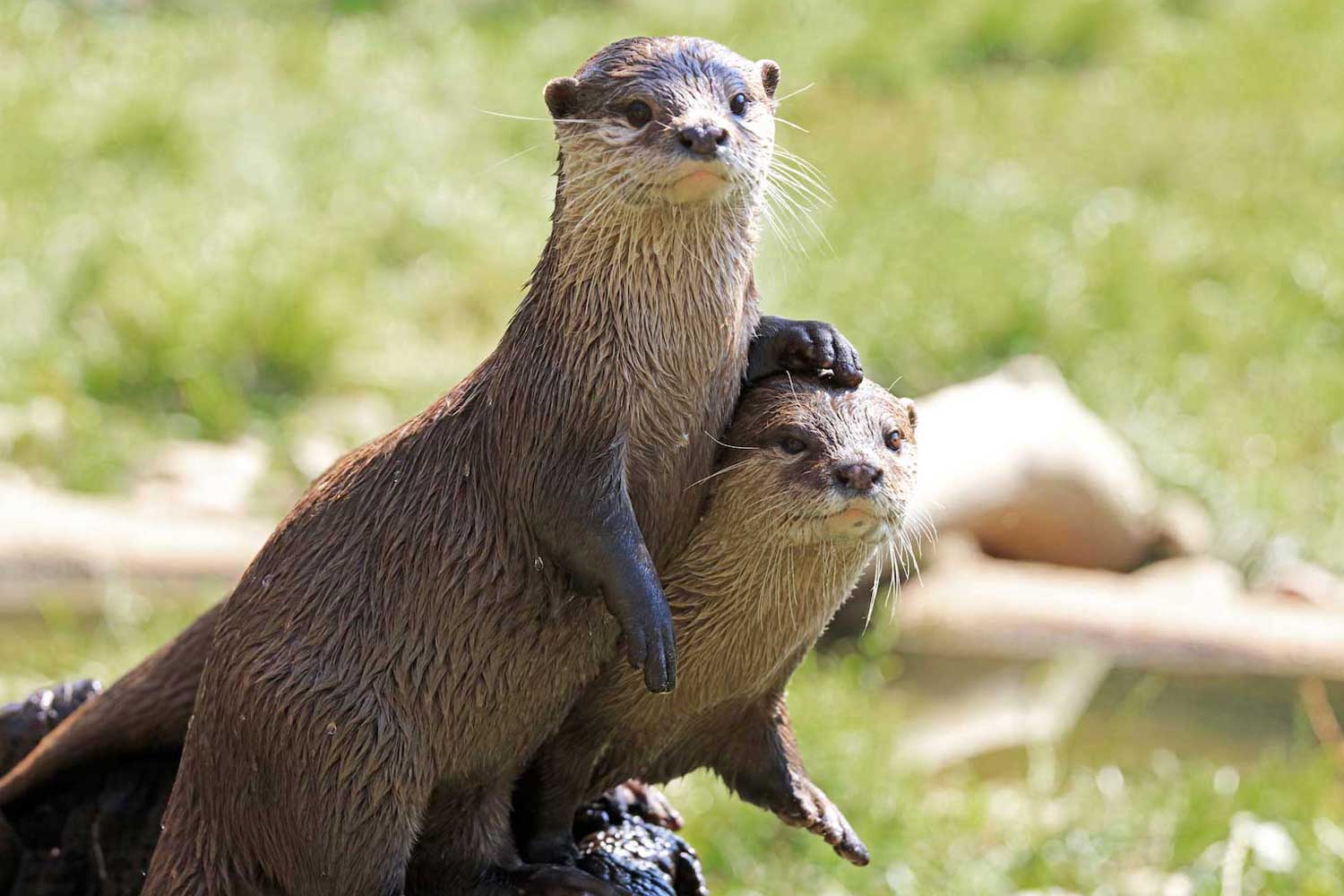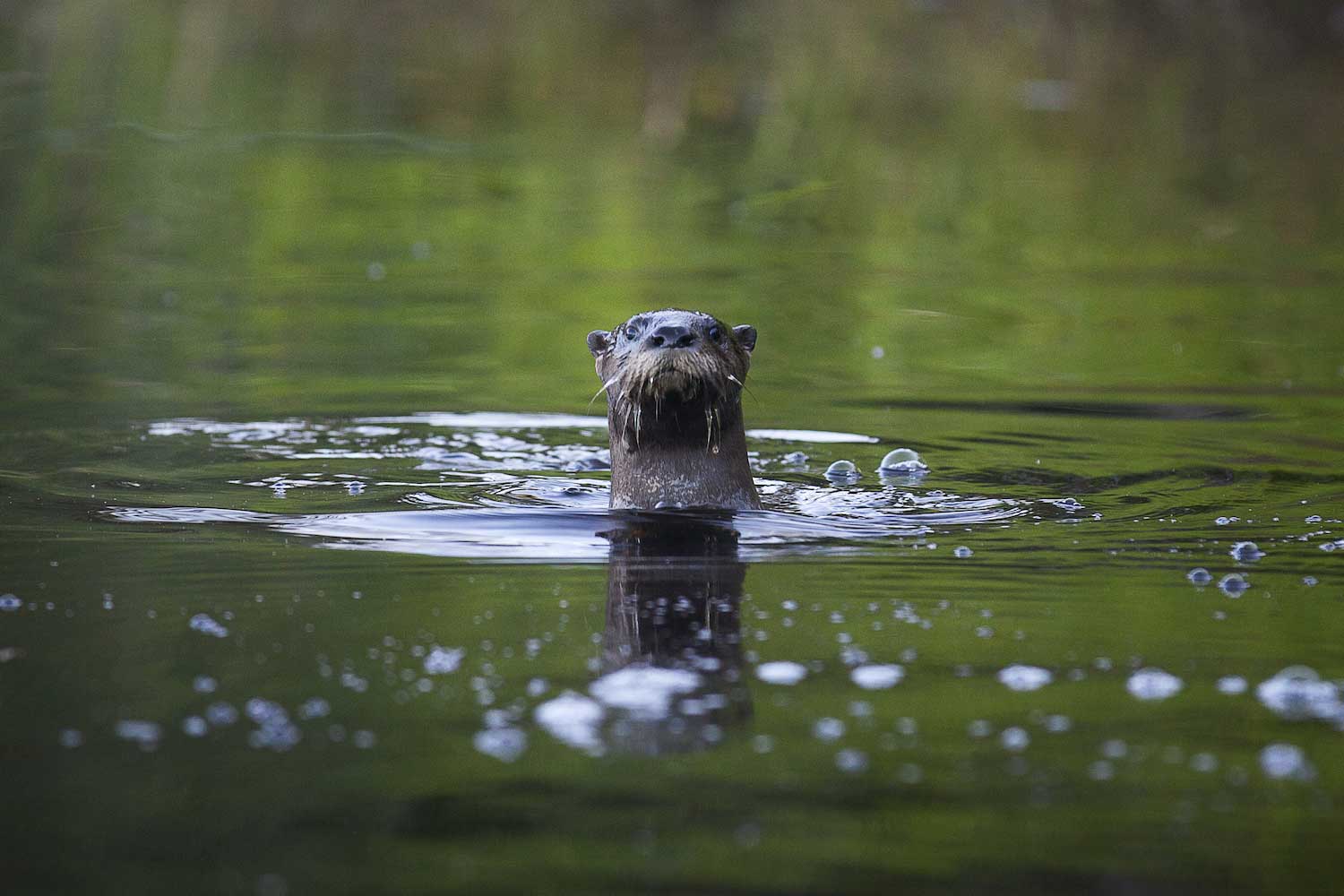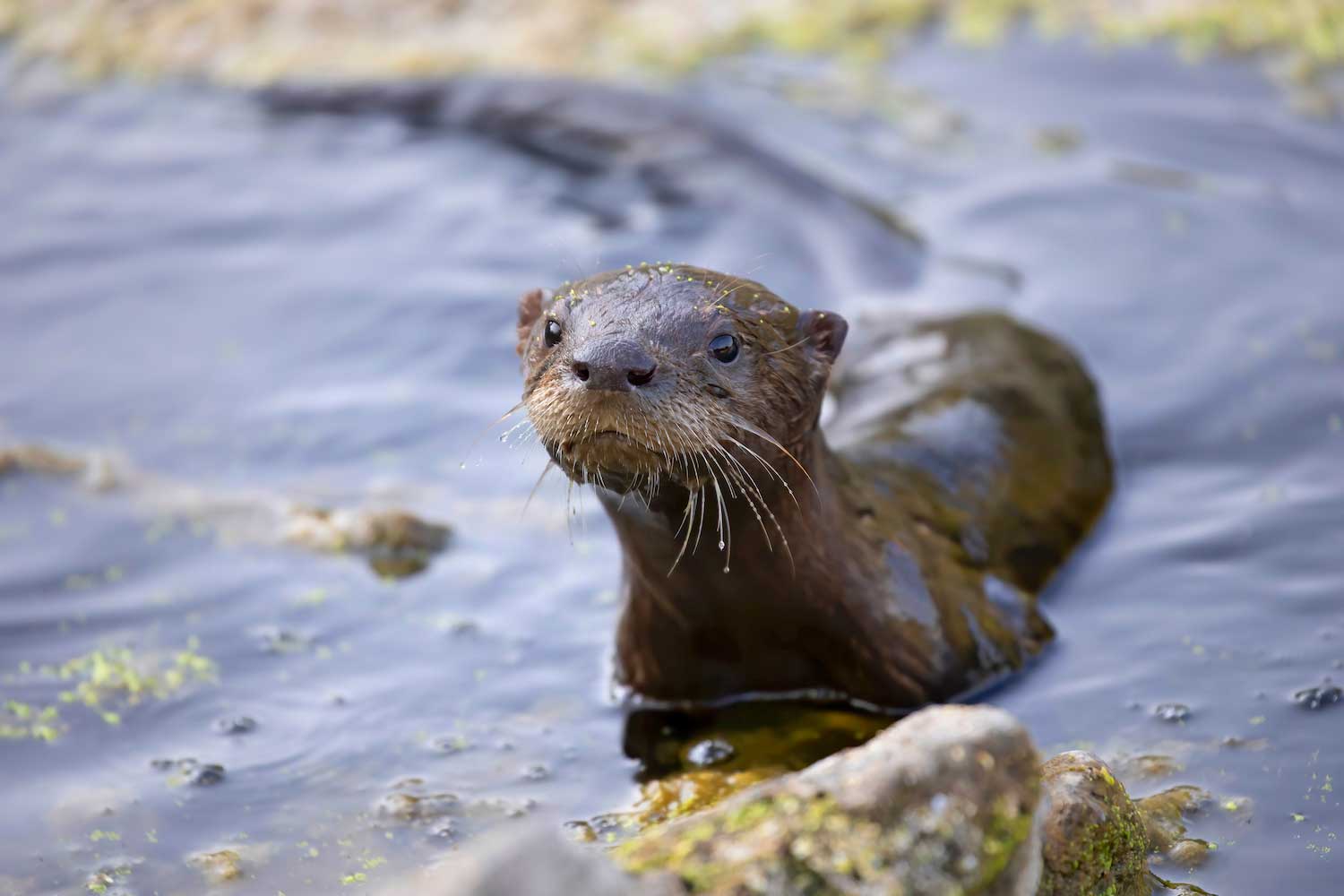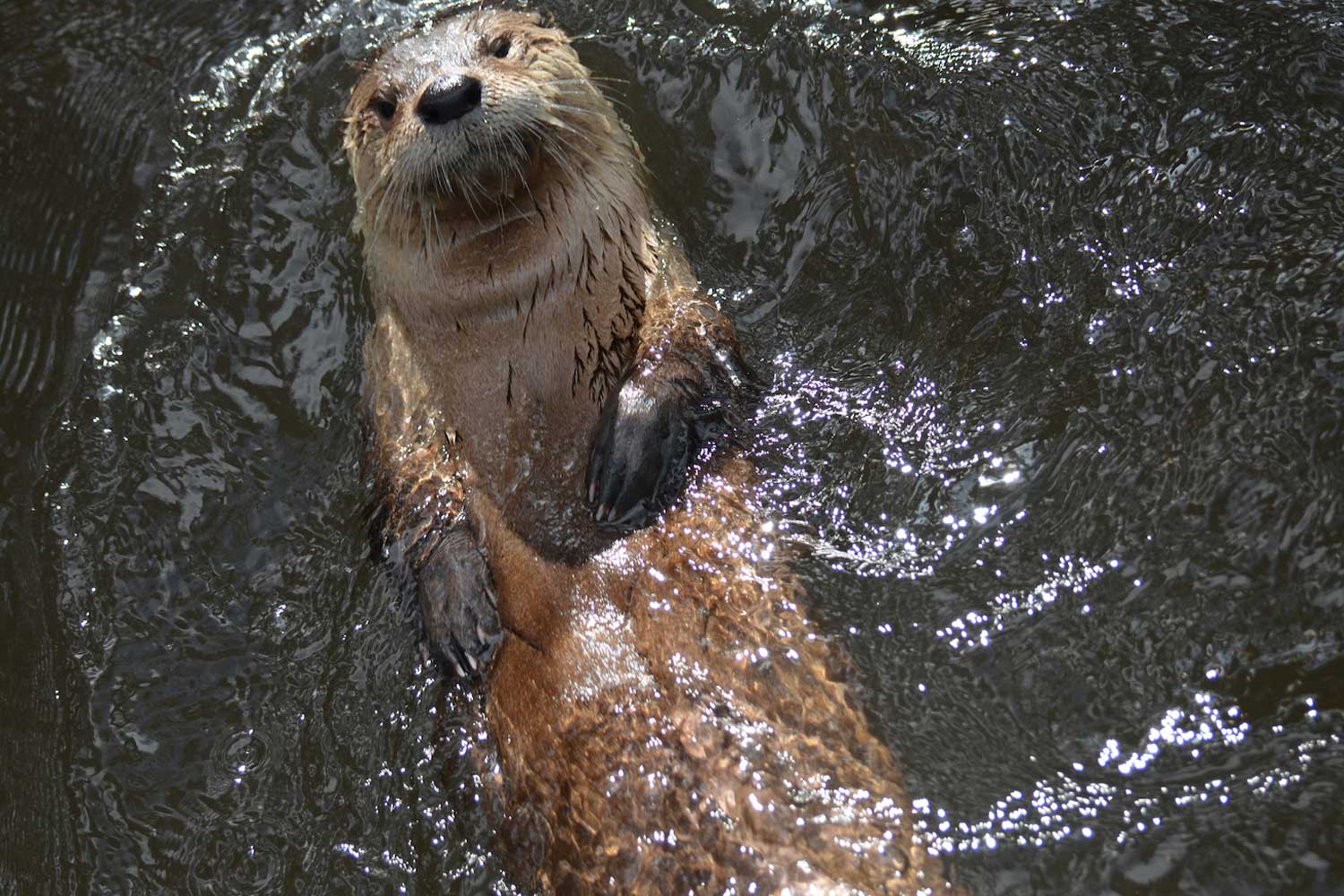Five fun facts about those playful river otters

Perhaps no animals have more of a reputation for their playful nature than river otters, which are sometimes seen splish-splashing and slipping and sliding all around the rivers and riverbanks where they live.
In the not-too-distant past, North American river otters were once an incredibly rare sight in Illinois, with the population decimated by the fur trade centuries ago and more recently by habitat loss as river habitats in the state were degraded, according to Outdoor Illinois Journal.
The otters were declared threatened in Illinois in 1977 and then listed as a state endangered species in 1989. In the 1990s, efforts to allow their population to rebound in Illinois included trapping otters from states with healthy populations and relocating them to Illinois. Those efforts were successful, and river otters live in every county in Illinois today, Outdoor Illinois reports. They were removed from the state's endangered species list in 2004.
In 2009, the river otter population in Illinois was estimated at 11,000 and growing. These semi-aquatic animals live along the state's rivers, and they are most populous along the Mississippi River and along the rivers in the northwestern part of the state.
Grow your knowledge on these animals with these five facts.
They are entirely different than sea otters
Because people are not as familiar with river otters are they are with other semi-aquatic animals like beavers and muskrats, river otters are often confused with sea otters. River otters live in both freshwater and salt water habitats, so confusion between the two animals often occurs in coastal areas. There are some big differences between the two animals, however.
First, sea otters are much larger than river otters — about two to three times bigger, according to the Seattle Aquarium. They also swim differently. Sea otters typically float on their backs, while river otters swim with their bellies facing down. Their tails are different as well. While river otters have long, pointed tails, sea otters have short, flat tails.
They are built for swimming
Like other semi-aquatic animals, river otters are built to swim. They have short legs and webbed feet that help them swim faster, and their long, narrow bodies, flat heads and long, strong tails help them maneuver in the water, according to the National Wildlife Federation. They even have eyes and ears toward the top of their heads to aid them when swimming at the water's surface. Their short, thick fur helps keep them warm while in cold water.
River otters can stay underwater for as long as eight minutes at a time, and their ears and nostrils close when they are submerged. They have an extra eyelid, called a nictitating membrane, that protects their eyes and allows them to see underwater. They are fast swimmers, traveling through the water at speeds of up to 8 mph, and they can dive to depths of 36 feet, according to Smithsonian's National Zoo & Conservation Biology Institute.
They are land lovers too
We think of river otters as aquatic animals, but they actually spend most of their time on land, using the water mostly to hunt for food and travel through their home range, according to the Seattle Aquarium. This is another difference between river otters and sea otters. Sea otters spend almost all of their time in water.
Because river otters spend so much time out of water, they can get around pretty well on land too. They can even run at speeds of up to 15 miles per hour, according to the National Wildlife Federation. They also use slippery terrain, like muddy or snow-covered areas, to slip and slide across land more quickly.
All that play serves a purpose
River otters typically live alone or in pairs, but they often gather in social groups, and these groupings of otters are known for their playful nature, the Smithsonian zoo reports. In addition, young river otters, called pups, often remain with their mothers for a period of many months, during which play is a normal part of their development.
Groups of otters are often seen slipping and sliding over muddy or snowy ground and ending with a splash into the water or further play around the water. This may look like pure fun, but all that play is beneficial for the otters too. These playful behaviors actually help the otters learn important survival skills such as hunting techniques, how to mark their territory with their scent and how to develop social bonds, according to Animal Diversity Web.
Although otters are naturals in water, they aren't born knowing how to swim. When they are about two months old, mother otters will push their pups into the water and watch them carefully until they are able to swim on their own, National Geographic reports.
They are big eaters
Otters, in general, eat a lot each day out of necessity. Because mammals lose body heat in the water much more quickly than they do on land, they have higher metabolic rates than animals that live solely on land. In fact, the metabolic rate of a river otter is about 50% higher than that of a land animal of a similar size, according to SeaWorld. Sea otters have metabolic rates as much as 25 times higher than land-based animals of the same size.
Their higher metabolic rates mean they need to consume more calories each day to sustain themselves. In the case of river otters, they are mainly carnivorous, and they mostly eat aquatic animals like crayfish, fish, frogs, turtles and other invertebrates, according to Animal Diversity Web. In the water, otters use their whiskers to help them find prey they can't otherwise see. They will also sometimes eat small animals from land and occasionally aquatic plants as well.





